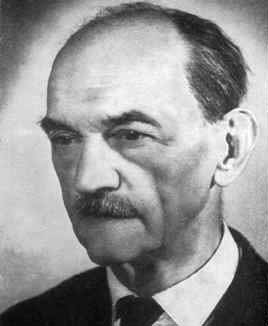

تاريخ الرياضيات

الاعداد و نظريتها

تاريخ التحليل

تار يخ الجبر

الهندسة و التبلوجي


الرياضيات في الحضارات المختلفة

العربية

اليونانية

البابلية

الصينية

المايا

المصرية

الهندية


الرياضيات المتقطعة

المنطق

اسس الرياضيات

فلسفة الرياضيات

مواضيع عامة في المنطق


الجبر

الجبر الخطي

الجبر المجرد

الجبر البولياني

مواضيع عامة في الجبر

الضبابية

نظرية المجموعات

نظرية الزمر

نظرية الحلقات والحقول

نظرية الاعداد

نظرية الفئات

حساب المتجهات

المتتاليات-المتسلسلات

المصفوفات و نظريتها

المثلثات


الهندسة

الهندسة المستوية

الهندسة غير المستوية

مواضيع عامة في الهندسة

التفاضل و التكامل


المعادلات التفاضلية و التكاملية

معادلات تفاضلية

معادلات تكاملية

مواضيع عامة في المعادلات


التحليل

التحليل العددي

التحليل العقدي

التحليل الدالي

مواضيع عامة في التحليل

التحليل الحقيقي

التبلوجيا

نظرية الالعاب

الاحتمالات و الاحصاء

نظرية التحكم

بحوث العمليات

نظرية الكم

الشفرات

الرياضيات التطبيقية

نظريات ومبرهنات


علماء الرياضيات

500AD

500-1499

1000to1499

1500to1599

1600to1649

1650to1699

1700to1749

1750to1779

1780to1799

1800to1819

1820to1829

1830to1839

1840to1849

1850to1859

1860to1864

1865to1869

1870to1874

1875to1879

1880to1884

1885to1889

1890to1894

1895to1899

1900to1904

1905to1909

1910to1914

1915to1919

1920to1924

1925to1929

1930to1939

1940to the present

علماء الرياضيات

الرياضيات في العلوم الاخرى

بحوث و اطاريح جامعية

هل تعلم

طرائق التدريس

الرياضيات العامة

نظرية البيان
Vojtech Jarnik
المؤلف:
B Novak and St Schwarz
المصدر:
Vojtech Jarnik (22.12.1897 - 22.9.1970), Acta Arithmetica 20
الجزء والصفحة:
...
3-9-2017
1192
Died: 22 September 1970 in Prague, Czechoslovakia (now Czech Republic)

Vojtech Jarnik studied at the Charles University in Prague. After graduating he was appointed as an assistant at the Charles University. In 1923 he went to the University of Göttingen to work with Edmund Landau. Returning to his post in Prague in 1924, he was again to visit Göttingen in session 1927/28 when he worked with Landau.
Jarnik was appointed to a chair of mathematics at the Charles University of Prague in 1928. He held this post until he retired in 1968 having taught at the University for a total of 47 years.
The main topic of Jarnik's research was number theory. One of the problems which he worked on extensively was related to the Gauss circle problem. Let R(r) denote the number of points (m, n) with m, n ∈ Z contained in a circle centre O, radius r. There exists a constant C and a number k with
| R(r) - πr2| < Crk.
Let d be the minimal value of k. Gauss proved in 1837 that d <= 1. Sierpinski improved the inequality to d <= 2/3 in 1904. Landau also made important contributions and in 1915 Hardy and Landau proved that d > 1/2. In 1923 it was proved that d < 2/3.
Jarnik and Landau studied the same problem for curves and surfaces other than circles. Here one is interested in the difference between the number of lattice points within the closed surface and the volume enclosed by the surface. Jarnik showed that for certain closed curves the error term does have d = 2/3. He studied the problem for the particular case of the ellipsoid in a series of papers.
Another area of number theory which interested Jarnik was Diophantine approximation. He wrote papers on this topic spanning the years 1928 to 1969. During the decade 1939-49 he wrote a series of papers dealing with the geometry of numbers, in particular dealing with Minkowski's inequality for convex bodies.
Around 60 of Jarnik's 90 papers were written on number theory. Many of the others were written on functions of a real variable, particularly during the years 1933-36, where he studied Dini derivatives and approximate derivatives of continuous functions. He also wrote on rearrangement of infinite series, trigonometric series and other areas of analysis.
Jarnik's character is described in [1]:-
Jarnik was an outstanding teacher who was able to transmit his enthusiasm for mathematics to his students. ... his profound humane erudition, his tact and his pure human character resulted in an admiration and deep respect from all who have known him personally.
As well as being an editor of Acta Arithmetica from the beginning of the journal, Jarnik was active in organising university education and scientific research throughout Czechoslovakia. He was honoured by many scientific societies, in particular being elected to the Czechoslovak Academy of Sciences.
Articles:
- B Novak and St Schwarz, Vojtech Jarnik (22.12.1897 - 22.9.1970), Acta Arithmetica 20 (1972), 107-115.
 الاكثر قراءة في 1895to1899
الاكثر قراءة في 1895to1899
 اخر الاخبار
اخر الاخبار
اخبار العتبة العباسية المقدسة

الآخبار الصحية















 قسم الشؤون الفكرية يصدر كتاباً يوثق تاريخ السدانة في العتبة العباسية المقدسة
قسم الشؤون الفكرية يصدر كتاباً يوثق تاريخ السدانة في العتبة العباسية المقدسة "المهمة".. إصدار قصصي يوثّق القصص الفائزة في مسابقة فتوى الدفاع المقدسة للقصة القصيرة
"المهمة".. إصدار قصصي يوثّق القصص الفائزة في مسابقة فتوى الدفاع المقدسة للقصة القصيرة (نوافذ).. إصدار أدبي يوثق القصص الفائزة في مسابقة الإمام العسكري (عليه السلام)
(نوافذ).. إصدار أدبي يوثق القصص الفائزة في مسابقة الإمام العسكري (عليه السلام)


















